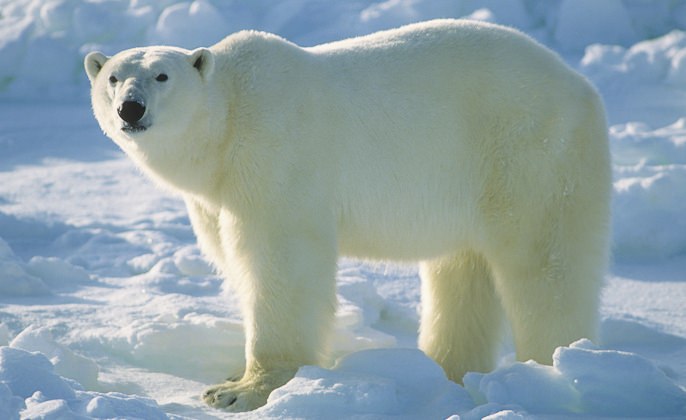Polar bears are one of the most threatened species in the planet. The world’s largest bear is constantly threatened to disappear especially with the melting of the Arctic sea ice.
The current global population of polar bears is estimated to be around 26,000. The bears use the ice as a platform to hunt seals, the fat-rich prey they depend on to get through the long Arctic winter.
Researchers said there’s a 70 per cent chance the population will shrink by a third; there’s a chance, but a lower probability, the population could decline by 50 per cent by 2050.
The reseachers’ projections were made using statistical models and computer simulations, using 35 years of satellite data.
Researchers led by Eric Regehr of the US Fish and Wildlife Service in Anchorage, Alaska projected three population scenarios out to mid-century, and all of them were bad news for the snow-white carnivores.
The first assumed a proportional decline in sea ice and polar bears.
Despite year-to-year fluctuations, long-term trends are unmistakable: the ten lowest Arctic ice extents over the satellite record have all occurred since 2007.
The record low of 3.41 million square kilometres (1.32 million square miles) in 2012 was 44 percent below the 1981-2010 average.
This week, the US National Snow and Ice Data Center reported that sea ice extent in October and November was the lowest ever registered for both months.
The culprit is global warming, which has raised the region’s surface temperatures by more than two degrees Celsius (3.6 degrees Fahrenheit) compared to the pre-industrial era level, twice the global average.
On current trends, The Arctic could see its first ice-free summers sometime in the 2030s, according to climate scientists.
In the second and third scenarios, the same sea ice projections were matched with available data about changes in specific polar bear populations spanning at least a decade, in small areas in one case, and across the four larger “eco-zones” in the second.
Averaging all three scenarios, the probability that polar bear numbers would drop by a third in 35 to 41 years is more than 70 percent, the study concluded.
Unfortunately, polar bears face other threats besides a habitat radically altered by the release of heat-trapping greenhouse gases.
In the 1980s and 1990s, females and pups were found to have accumulated high levels of toxic PCPs in their tissue and organs.
The manmade chemicals—used for decades and banned in many countries in the late 1970s—worked their way up through the food chain, becoming more concentrated along the way.
But a new study, published last week in the Royal Society’s Proceedings B, suggested that declines in some polar bear populations stemmed from contaminated males rendered sterile by the chemicals.
“PCB concentrations in the Arctic have levelled off,” said lead author Viola Pavlova, a scientist at the Institute of Hydrobiology in the Czech Republic.
“Unfortunately, many other manmade chemicals that are also endocrine disruptors occur in the Arctic and could act similarly,” she told AFP.















